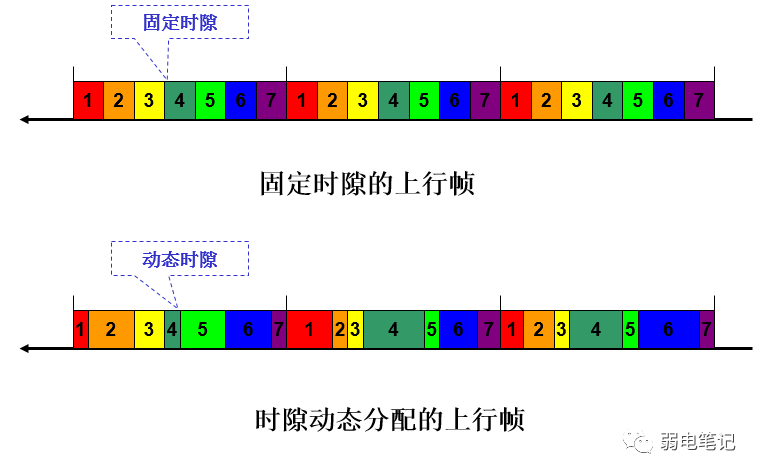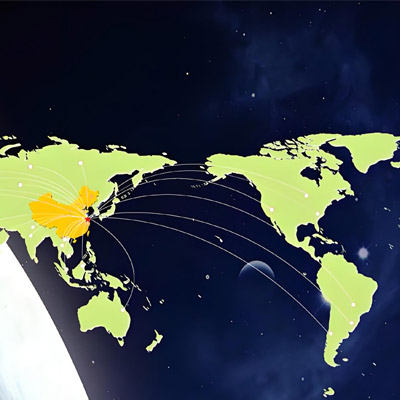Detailed explanation of EPON system technology OLT-ONU application introduction
1. What problems is PON used to solve
With the emergence of high-bandwidth services such as video-on-demand, online games and IPTV, users are in urgent need of increasing access bandwidth. Existing broadband access methods based on ADSL are becoming increasingly difficult to meet users 'requirements for high bandwidth, two-way transmission capabilities, and security.
Due to its long transmission distance, strong anti-interference ability, and large capacity, optical fiber has long been widely used in backbone networks. In recent years, with the reduction of the cost of optical devices, optical fiber has gradually become the first choice for the transmission medium of access networks.
Passive Optical Network (PON) is relatively low-cost in optical fiber access methods and can be smoothly upgraded. It is increasingly favored by telecom operators and is considered to be an ideal solution to the "last mile" problem.
2. Composition and structure of PON
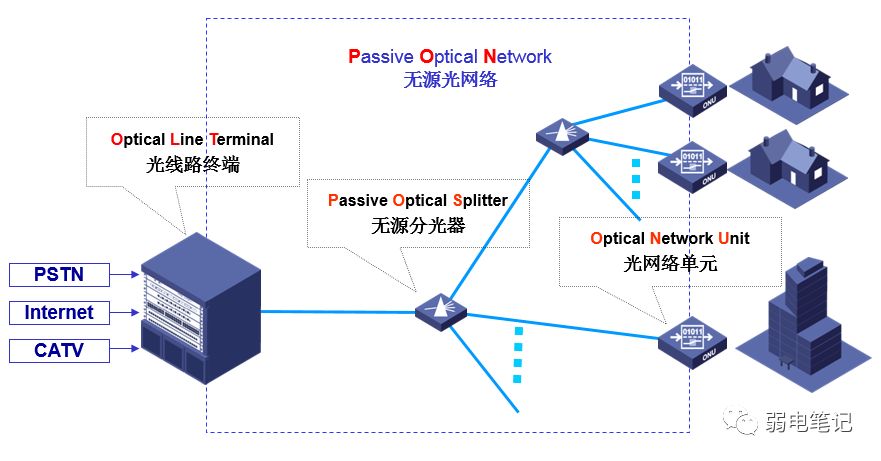
A PON consists of three parts: an optical line terminal (OLT), an optical network unit (ONU) and a passive optical splitter (POS).
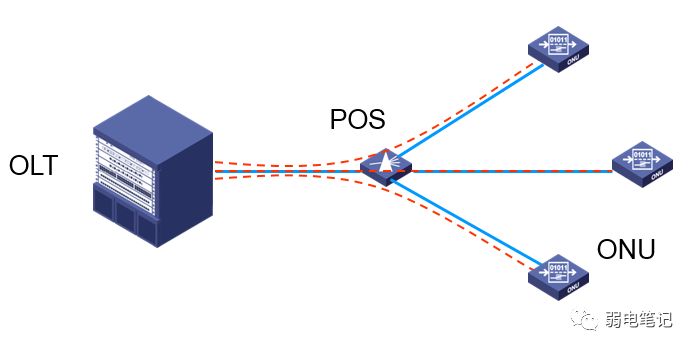
PON是一种非对称,点到多点(P2MP)结构,OLT和ONU所扮演的角色不同,OLT相当于Master的角色,ONU相当于Slave的角色。
三、PON的优点:
节约
P2P——N条光纤;2N光收发器
P2PCurb——1条光纤;2N+2光收发器;需要本地电源;大量节约光纤
P2MP(PON)——1条光纤;N+1光收发器;大量节约光纤;大量节约光收发器
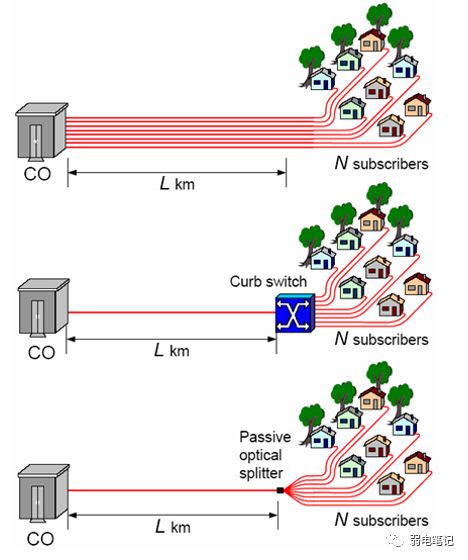
Signals do not pass through active electronic devices during PON transmission, greatly reducing potential failure points;
The use of passive devices simplifies the network hierarchy, and the flat network structure is easier to maintain and manage.

long distance
The PON transmission distance is 10 to 20 kilometers, which completely overcomes the distance limitations of Ethernet and xDSL access methods, and greatly enhances the flexibility of operators 'end office deployment.

high bandwidth
Compared with xDSL, PON has higher bandwidth, fully meeting the needs of future HDTV online playback services.
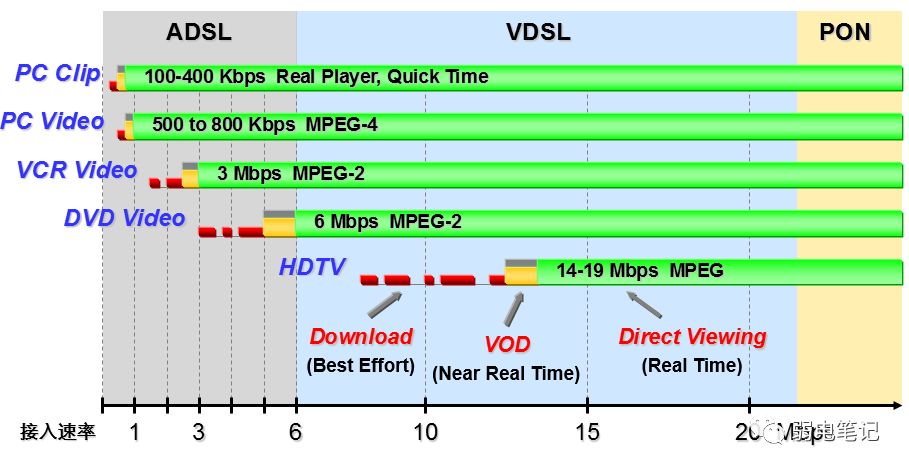
The PON networking model is unlimited and can flexibly form networks with tree and star topologies;
PON is especially suitable for occasions where user access information points are very scattered, realizing that one backbone optical fiber can meet the access of all user access information points.

4. The main standards of PON
GPON--GigitPON, ITUG.984 protocol standard, is an upgrade and extension of APON, using a common frame format to provide support for multiple services. The maximum speed is 2.5Gbps. GPON has advantages in high speed and multi-service support, but its technology is complex, its cost is high, and its product maturity is not high.
EPON--Etherneover PON, the IEEE802.3ah protocol standard, that is, transmitting Ethernet format messages on the PON network can support a symmetric rate of 1.25Gbps. EPON is based on Ethernet technology, with simple and efficient protocols. Compared with APON, GPON has obvious advantages.
5. Key technologies of EPON
Channel multiplexing technology
EPON system adopts WDM technology to realize bidirectional transmission on a single fiber;
The channel rate is 1.25Gbps for upstream and downstream.

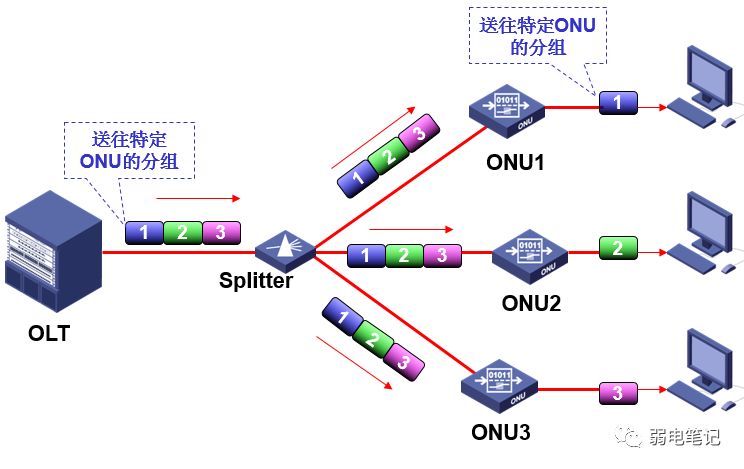
EPON uplink transmission method---TDMA method
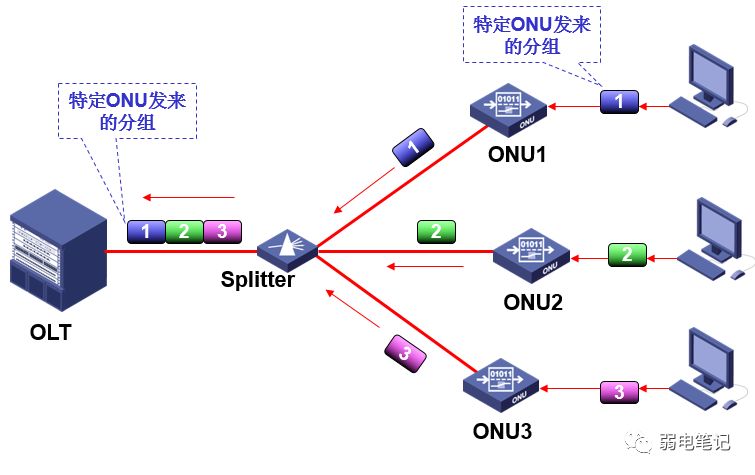
Multi-point Control Protocol--MPCP
Unlike the Ethernet P2P structure, PON is a P2MP structure. ONUs compete for upstream channel resources, and an arbitration mechanism is needed to avoid upstream data conflicts and allocate channel resources reasonably. The 802.3ah protocol specifies the corresponding control protocol-Multi-point MAC Control Protocol (MPCP);
lMPCP mainly defines a Multi-point MAC Control sublayer to extend and replace the MAC Control sublayer defined by the 802.3 protocol. The priority of control frames in the MPCP protocol is higher than the priority of MACClient data frames.
Ranging and delay compensation
EPON uplink transmission adopts TDMA method, and the OLT determines the time at which the ONU sends data. Due to the different distance between each ONU and the OLT, delay differences will occur. If there is no effective delay compensation mechanism, uplink data transmission conflicts will still occur.
EPON ranging and delay compensation are key technologies for upstream channel multiplexing. Ø During the DiscoveryProcessing process, the OLT ranges the newly registered ONUs and calculates the RTT (RoundTrip Time) value of each ONU;
OLT uses RTT to adjust the authorization time of each ONU;
The OLT can also initiate ranging when receiving MPCPPDU.
Calculation of RTT:
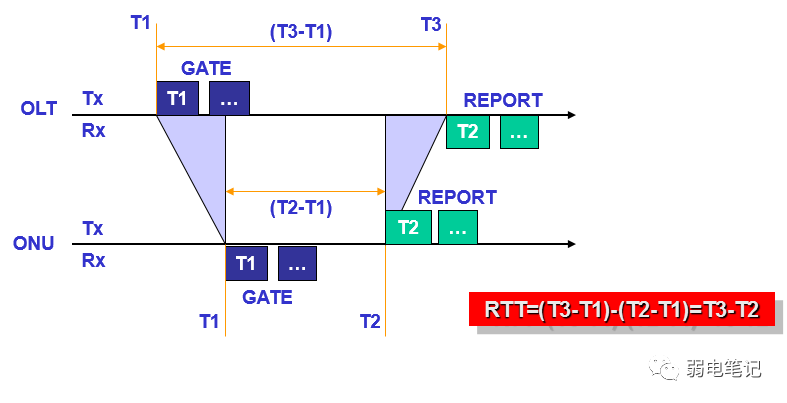
The GATE frame contains a "timestamp" field, and the ONU uses this "timestamp" to refresh the local time register. The OLT can calculate the RTT from the received REPORT frames to perform experimental compensation.
Dynamic Bandwidth Allocation (DBA)
Comparison of fixed and dynamic time slots:
